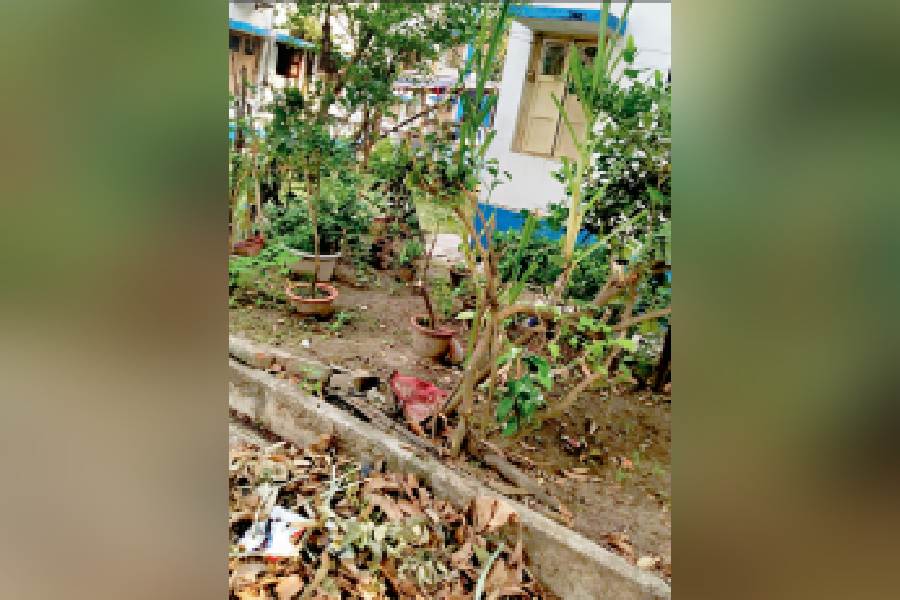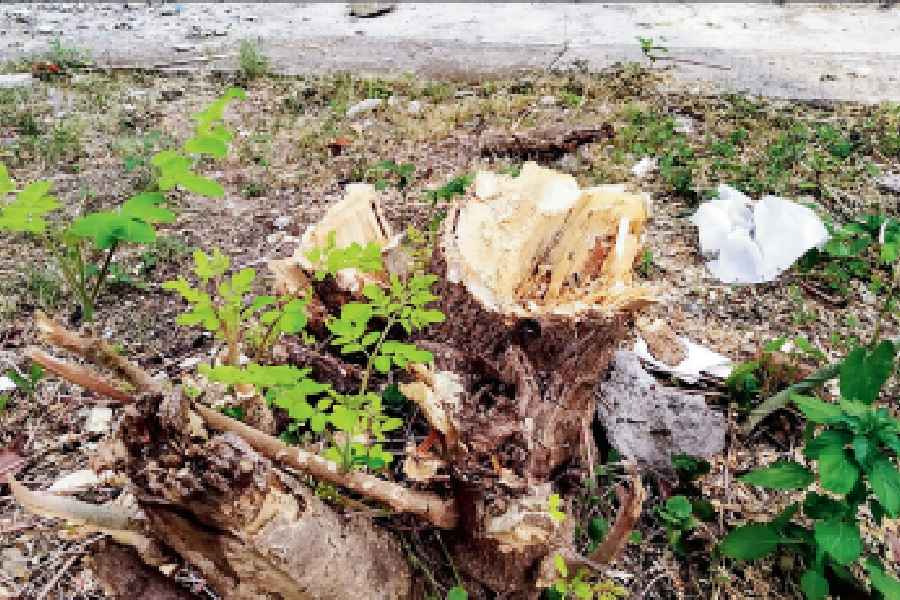Days before World Environment Day, green thumbs of Baisakhi Abasan accused the authorities of demolishing the fences around their gardens, damaging their plants and trimming and chopping trees around the complex in unscientific manners.
But the urban development department (UD), which owns the land and the housing estate for government employees, alleges that the trees planted on encroached land by residents were damaging the subsurface sewerage lines. The move has reignited the debate on the balance between encroachment and the preservation of green spaces for the greater good.
“Workers came on June 1 and without warning started breaking the bamboo fence around our garden,” said Subhra Adhikary, whose ground floor flat is near Baisakhi Island.
“This garden is more than 10 years old and has precious plants. The authorities do not maintain the campus and the wild grass grows up to six feet during monsoon. What is the harm if we spend our own money and take responsibility of the patch before our flat?”

A garden in front of a flat whose fence was demolished by the authorities The Telegraph
One elderly resident hugged his banana tree, pleading with the workers to spare it, but they forcefully felled it anyway. Workers allegedly harmed several sojne, mango and banana trees on the campus too.
"In the name of pruning they have chopped off more than half the branches of the mango tree before my flat! And the branches have fallen on my garden and crushed my plants. The fence, of course, they destroyed themselves,” said another resident Sunil Singh, who is living here since 2020.
“Had they informed us that they had problem with the fences we would have removed it ourselves.” A UD official spoke of a complaint among many lodged by other residents about poisonous insects, specifically caterpillars, breeding because of sojne cultivation.
Several residents in the complex had put up the bamboo and net fences to prevent street dogs from digging up the ground, cows from eating up the leaves and neighbours from stealing flowers and plants. It also acted as a kind of demarcation to show people that this space was looked after.
“And if they object to garden fencing why do they allow other residents to build garages for their cars in common areas?” asks Adhikary, pointing to several structures comprising plastic sheets supported by bamboo poles being used as garages. The land inside the housing estate will be cleared further before the monsoon for vector control, the official said.
“All encroachments will be cleared. But our immediate priority was to save the sewer lines,” he said. “The message from the estate department is clear. Residents have been given the quarters only for habitation. They have no claim on the land outside,” the official added.
Footpath encroachment for gardening has been a touchy topic in Salt Lake for decades. The authorities, including even the first chairman of Bidhannagar Municipality, Dilip Gupta, have called for footpaths to be left free for pedestrians. But residents argue that the civic body does little to keep them clean and so they take matters into their own hands by turning a part of the pavement into a garden.
